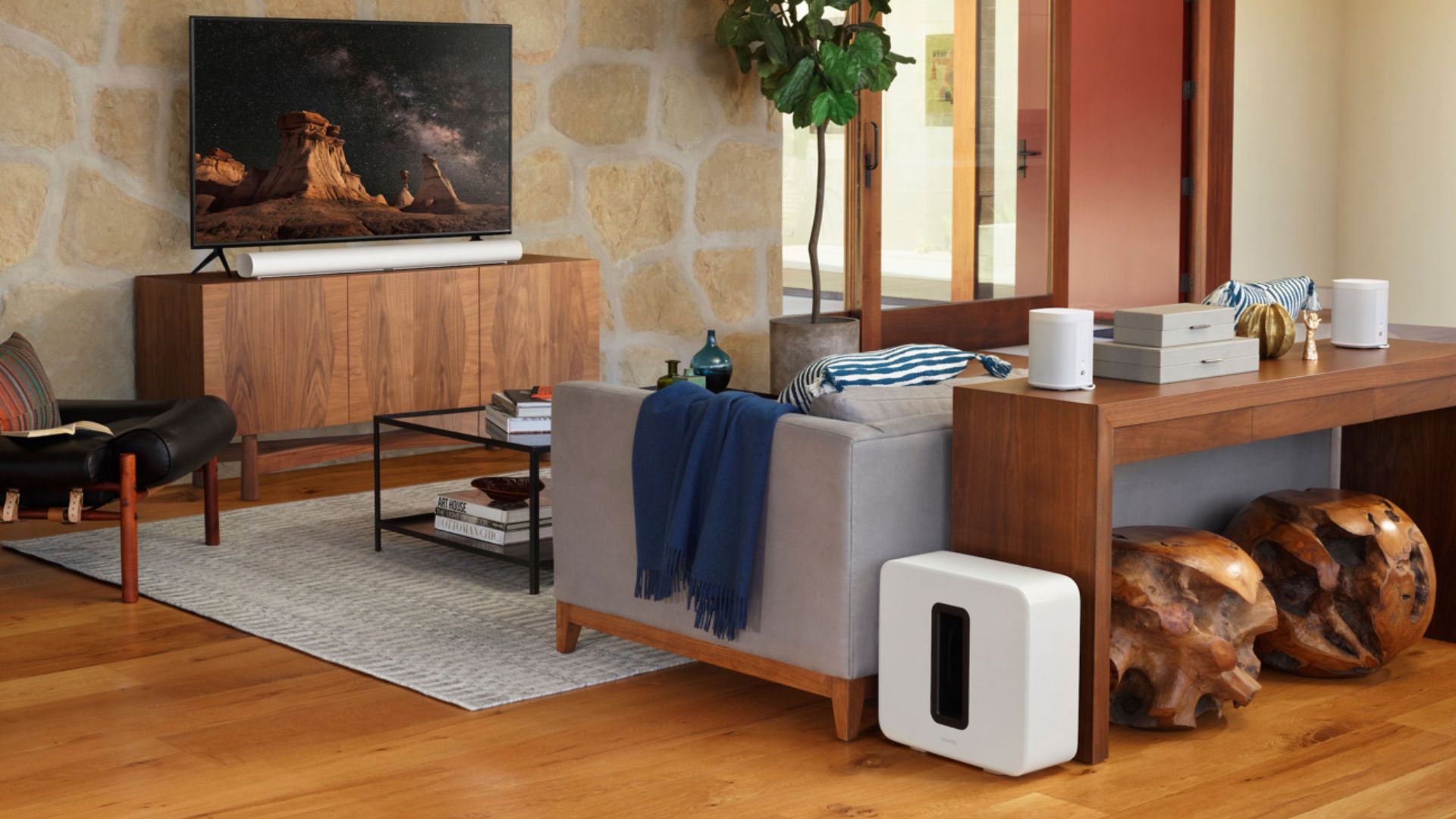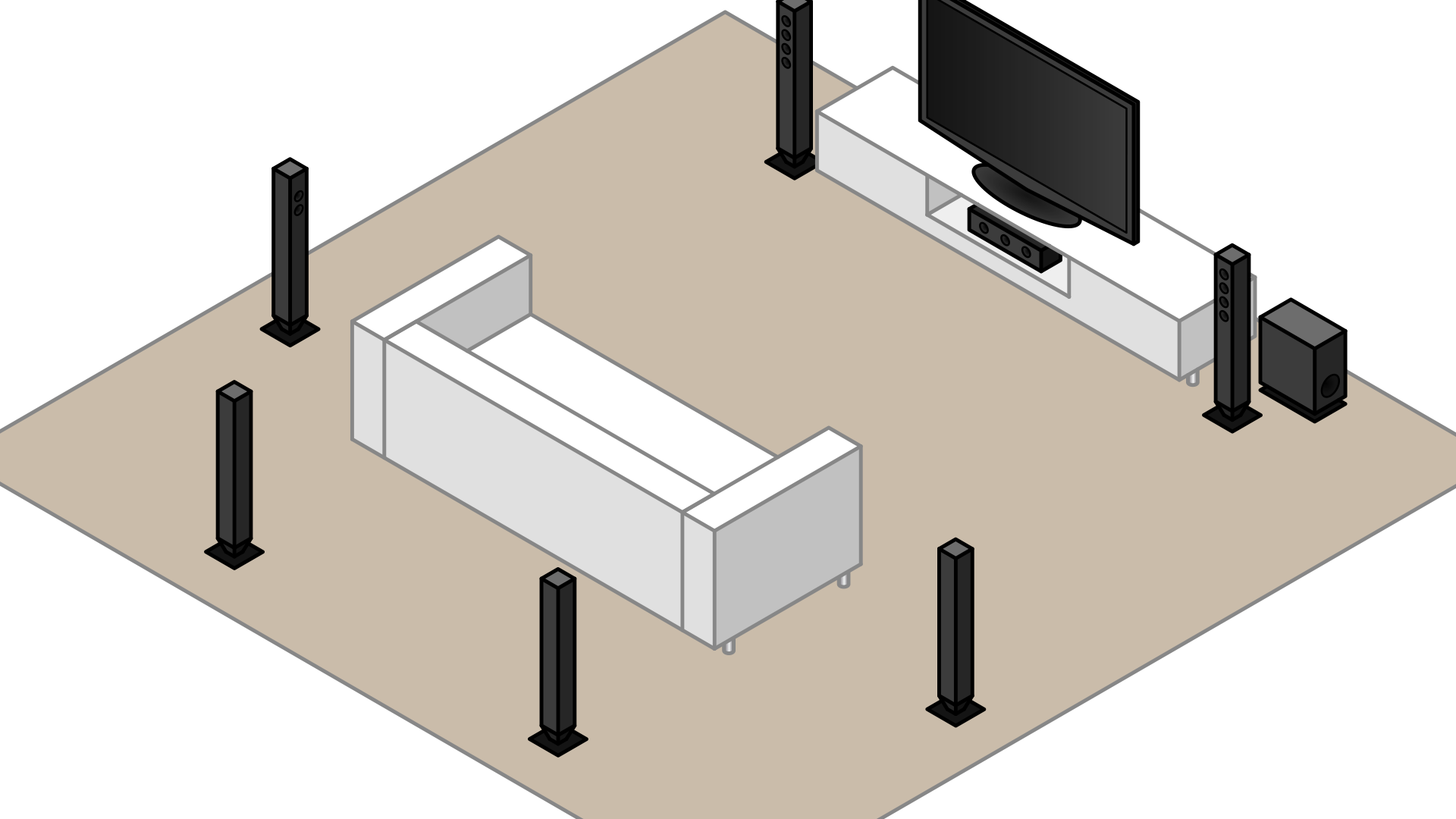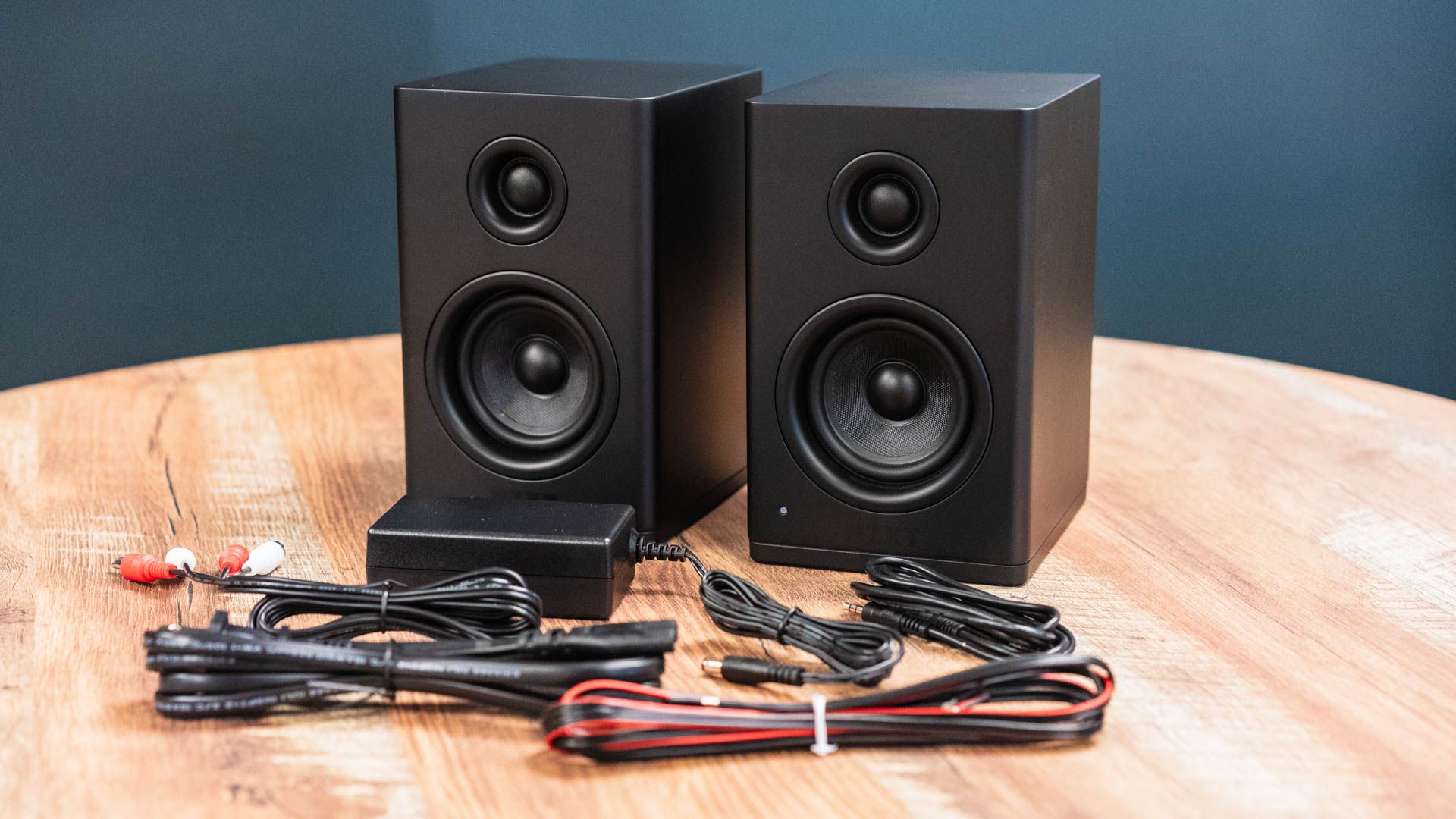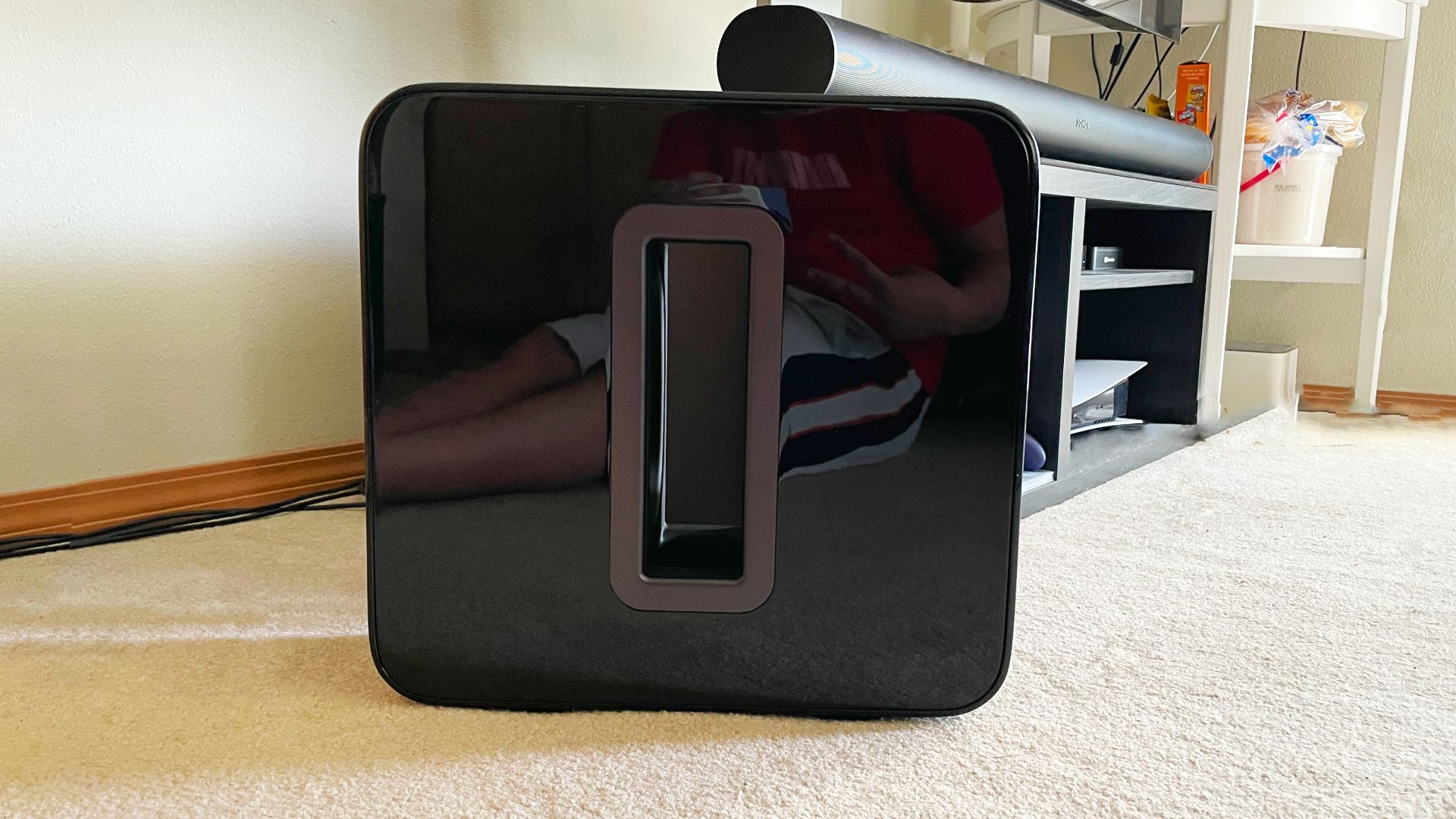Summary
- Wireless home theaters offer convenience with minimal setup hassle but come at a higher cost than wired systems.
- Wireless systems allow you to hide the signal cables, but they still need power cables to operate.
- High cost, mediocre audio quality, and limited compatibility are major drawbacks of wireless home theaters.
If you’re looking to upgrade from your TV’s shoddy speakers or a basic soundbar to a proper home theater, you have two options: wired and wireless. Has technology advanced enough to the point that wireless systems are worth considering? Let’s see.
How Does a Wireless Home Theater Work?
Wireless home theater systems use a wireless transmitter or a soundbar with a built-in transmitter to send audio signals to the other speakers in your room, typically to create a surround sound system. The transmitter or soundbar connects to your TV via an HDMI, optical, or AUX cable and then sends the signal to the speakers via radio waves, typically on the 2.4GHz or 5GHz bands.
The “wireless” part can be slightly misleading, as most of these wireless home theaters aren’t actually completely wireless. While some setups feature true wireless speakers that run on batteries, similar to portable speakers, most systems rely on speakers that still need to be plugged into a regular wall socket for power. You probably don’t want a battery-powered home theater system anyway, as the hassle of having to charge each speaker every few days outweighs the benefits of a wireless system.
Advantages of a Wireless Home Theater System
Let’s face it: if your home theater is in your living room, you want it to look neat and tidy, so the idea of a wireless system is quite appealing. The goal isn’t to have a completely wireless audio system; it’s to keep wires at a minimum by eliminating the need for cumbersome signal wires. These can be notoriously difficult to hide, as they have to run all the way from your receiver to each speaker.
If you want to manage cables effectively, drilling into your walls is almost a necessity, and that just isn’t feasible for most of us. With a wireless system, the setup is basically plug-and-play. Assuming you have enough electrical outlets around your room, you’ll minimize cable clutter and almost hide them completely with a wireless home theater system. Plus, you have more freedom in speaker placement.
Another benefit of some wireless systems is that they can double as smart speakers, such as Sonos speakers. Even better, you can use the system with other devices, such as your phone or laptop, via Bluetooth or Wi-Fi, so it’s a super quick way to play music in the background without having to turn the TV on. Then again, you can do that with any Bluetooth or Wi-Fi-enabled home theater A/V receiver, such as the Sony STR-AN1000
You’ll Sacrifice a Lot to Lose Wires
We’ve learned about the good, but it’s now time to face the major drawbacks of wireless home theaters. The biggest sacrifice you’ll have to make is money, as good wireless home theaters are prohibitively expensive.
If you want a good, low-latency home theater setup with speakers that sound half-decent and don’t cut out, you should get a WiSA-certified system, with Sonos being a solid alternative.
For instance, the Enclave CineHome PRO 5.1 system is $1,359.97 on Amazon at the time of writing. A Sonos-based system would be even more expensive, as just the Sonos Sub 4 subwoofer currently costs $679—and that’s on sale!
For context, you could almost buy the entire Klipsch Black Reference Theater Pack 5.1 twice for the price of that subwoofer.
While cheaper wireless options exist, most of them aren’t good. Reviews often cite issues like poor audio quality, setup difficulties, latency, and signal loss and interference. You’ll have to pay a lot more to get a wireless system, and even then, it will only sound as good as an average wired system that costs a third as much.
Even if you aren’t restricted by your budget, you’ll still get way more value for your money by opting for a wired system. You could spend the extra cash on something that’ll actually improve your movie-watching experience, such as Dolby Atmos, more channels, an extra subwoofer, or better hardware for superior sound quality.
Although wired systems take more time for the initial setup, they’re also more reliable. Wires don’t suffer from latency issues or signal degradation and can provide better sound quality, largely thanks to higher sample rates and bit depths.
Another major drawback of wireless systems is that you have limited flexibility in choice. Most wired home theater systems are modular, meaning you can swap parts out as you see fit. Wireless home theater systems have limited compatibility, forcing you to buy into a brand’s ecosystem. Forget about that $50 subwoofer on Facebook Marketplace; you’ll have to shell out $500 for the proprietary model if you want all the bass. This also means your calibration options are restricted to whatever the manufacturer provides.
Is Wireless Really Worth It?
The TL;DR is that you’ll have to pay a massive premium to get a good wireless home theater system with the sound quality of a much cheaper wired setup. However, if you’re aiming for a minimalist style or just don’t want to deal with cables in the middle of your living room, a wireless home theater system could still be worth it. While you’ll have to shell out a small fortune, the experience will still be far superior to that of even the most expensive soundbar.
Conversely, if sound quality, reliability, and value for money matter to you, go for a wired system. Although a wired system requires more time and effort to set up, you can still achieve a pretty clean look with some proper cable management. If you can drill holes into your walls and potentially wall-mount the speakers (or place them on a wall-mounted shelf), you’ll still be able to hide all the cables to create a home cinema that looks just like the real deal.
Wireless home theater systems provide an easy and convenient way to set up a home theater system with minimal hassle. However, they cost significantly more than wired systems while offering few advantages beyond the initial ease of setup and lack of signal cables. Still, if drilling holes in your walls isn’t an option, and you don’t mind the high price, wireless systems are worth considering.







